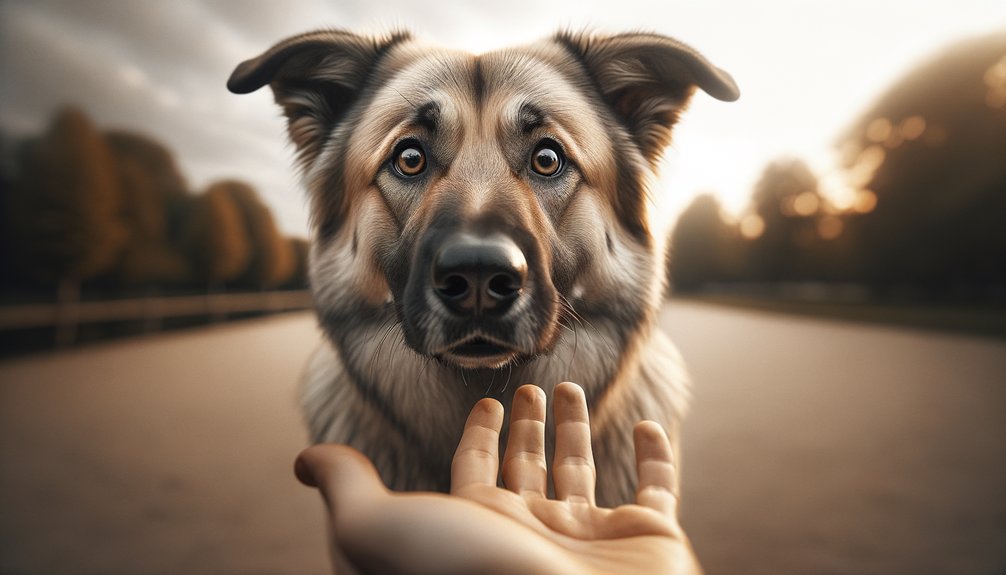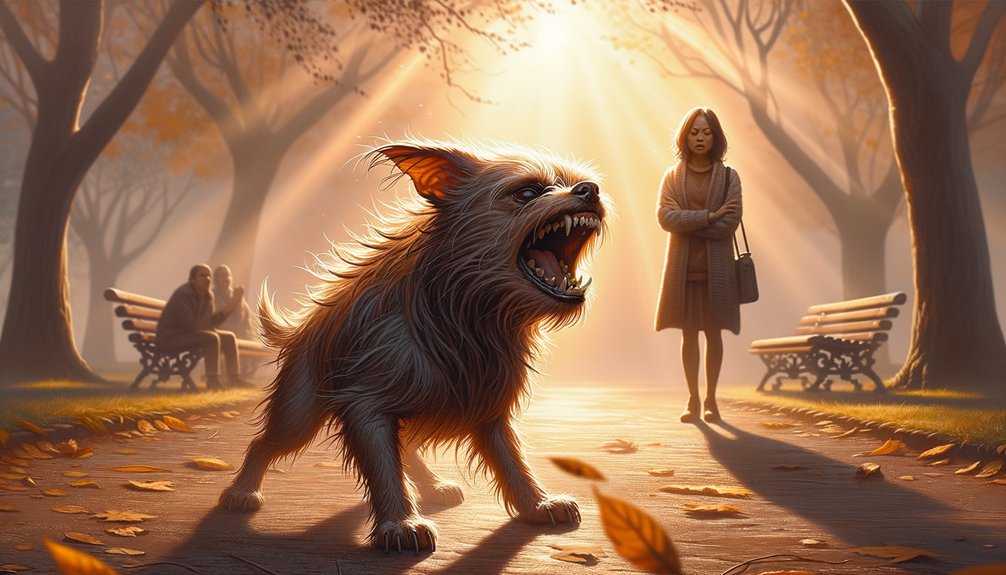When your dog acts aggressive, stay calm and sure of yourself. Watch for small warning signs—growling, stiff posture, raised fur. Don’t rush or shout. Offer a simple distraction, like a favorite toy or treat, and guide your dog to a quiet spot. Acting quickly and knowing what upsets your dog can stop aggression before it gets worse. Follow these steps to keep everyone safe.
Key Takeaways
- Watch for growling or a stiff body and act fast to stay safe.
- Stay calm and speak softly; avoid sudden moves that scare your dog.
- Use a toy or simple command to redirect your dog’s focus.
- Give your dog a quiet spot with familiar items to relax.
- If aggression keeps up, talk to a trainer or dog behavior expert.
Recognize the Signs of Aggression

Spot aggression early. This keeps you and your dog safe.
Watch the dog’s body. A stiff stance, raised fur, hard stare, growls, or bared teeth all signal fear or stress.
If you see these signs, pause and speak softly. Stay still and avoid quick moves.
Noticing these cues shows respect. It builds trust and prevents harm.
Maintain a Calm and Confident Demeanor
When a dog shows aggression, staying calm and confident can prevent the situation from escalating. Your demeanor directly influences your dog’s response, so mastering control is essential for effective dog behavior management.
Remaining calm and confident is key to preventing aggressive behavior from escalating in dogs.
To maintain a calm aggressive dog:
- Breathe deeply and speak softly to convey reassurance.
- Avoid sudden movements or loud noises that might trigger more aggression.
- Stand tall and steady to project confidence without intimidation.
Use Distraction Techniques to Divert Attention
Aggressive behavior needs careful handling. Use quick distractions to calm your dog.
When you spot aggression, offer a favorite toy or give a well-known command. This shift breaks their tense focus and brings calm.
Timing matters. Fast distractions stop aggression before it grows. Always swap tension for something positive, and stay consistent with these calming tips.
Create a Safe Space for Your Dog
Distraction techniques can effectively redirect your dog’s focus, but providing a dedicated safe space offers a lasting refuge where your dog can truly relax and feel secure. When you create this environment, you help soothe a hostile dog and reduce their canine stress response, making safe handling of aggressive dogs easier.
To set up a safe space:
- Choose a quiet, low-traffic area to minimize triggers and promote calmness.
- Include familiar items like a favorite blanket or toy to offer comfort and reassurance.
- Ensure the space is enclosed yet accessible, so your dog feels protected without feeling trapped.
Seek Professional Help When Needed
If your dog still acts aggressive, get professional help.
A certified trainer can watch your dog and teach simple steps.
If health issues cause aggression, see a veterinary behaviorist.
Asking for help shows strength, not weakness.
With experts by your side, you’ll build a calm, safe home.



